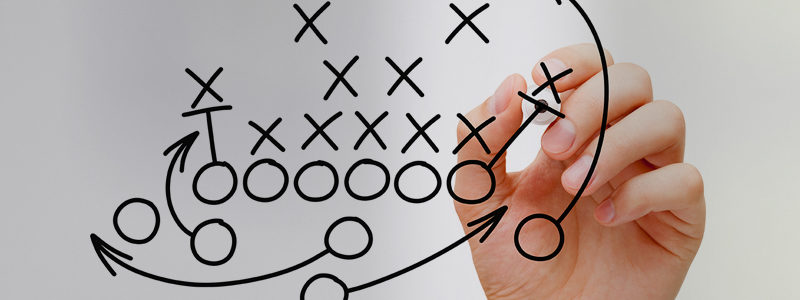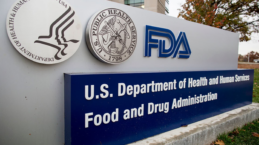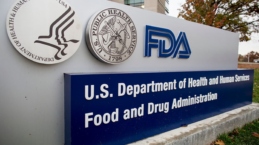

insights
Conducting an FDA Meeting: A Playbook
For some people, the thought of an FDA meeting brings a sense of panic followed by a dry sweat. For others, the mere mention of the Agency’s name can make them start shaking in their boots. Fear not! Halloran is here to walk you through the dos and don’ts of conducting an FDA meeting. Our goal is to offer insight on our past experiences with clients to provide guidance on how to proceed with confidence during your future FDA meetings.
Step One: Know Your Meeting
The first step to success is to make sure you know what type of meeting is being held. Each meeting type has its own deadlines for submissions, so it is imperative you understand which meeting type you are requesting and the timelines that correspond to that meeting type. For example, for Type A meetings, the FDA has up to 14 calendars from receipt of the meeting request to respond granting or denying the request. If the meeting request is granted, Type A meetings are scheduled up to 30 calendar days from receipt of the meeting request. Additionally, for Type A meetings, the meeting package is submitted by the Sponsor at the time of the meeting request submission. However, for Type B meetings, the FDA has up to 21 calendar days from receipt of the meeting request to respond, and if the meeting is granted, Type B meetings are scheduled up to 60 calendar days from receipt of the meeting request. For Type B meetings, the meeting package is due no later than 30 days before the scheduled date of the meeting. Therefore, if the FDA does not respond until 21 calendar days after receipt of the meeting request, and the meeting is scheduled 60 calendar days from receipt of the meeting request, you will only have one week to submit your meeting package (30 calendar days before the meeting). Due to the potentially aggressive timelines for the meeting package submission for Type B meetings, it is highly recommended that Sponsors begin drafting the meeting package prior to submitting the meeting request to the FDA. Furthermore, Type B (EOP) and Type C meetings have their own timelines so make sure to review the FDA guidance to determine which deadlines you will have to follow for your meeting. Remember, fashionably late does not fly when it comes to the FDA so be proactive with submissions.
Step Two: Prepare for Your Meeting
Once you receive the notification that your meeting has been granted, the next step is to immediately schedule internal meeting preparation sessions and rehearsals. Whether the meeting will be conducted in person or a teleconference, you need to practice. Sponsors should use the FDA’s preliminary meeting comments to establish an agenda for the meeting. The team should delineate which questions will be discussed at the meeting and prioritize the order of questions for discussion. Give yourself time for the most critical items. Additionally, you will want to prepare regulatory strategy talking points, including fallback positions, and if you anticipate the FDA is going to push back on something, it is important to discuss with your team what you are and are not willing to budge on. It is also important to practice in front of the right crowd. You know those coworkers that always ask a million questions each meeting? Grab them! You want to practice presenting in front of someone who will question you and act as the devil’s advocate to make sure you are comfortable and confident with your strategies.
Sponsors must also make sure to choose their meeting attendees wisely. Your C-level staff should not get an automatic invite because of their titles. We find, especially for larger companies, it is more appropriate for Sponsor’s Subject Matter Experts (SMEs) to be at the meeting than C-level staff. Additionally, the Sponsor’s authorized representative should attend the meeting. This representative is the person working with the FDA Regulatory Project Manager (RPM). The FDA RPM is the gatekeeper, so you want to keep that person happy. Out of courtesy, confirm with the RPM they have the meeting materials readily accessible and let them know who is attending the meeting from the sponsor side. This should include mention of the subject matter expertise of each attendee. Since the RPM will be most familiar corresponding with your authorized representative, we suggest having this person kick off the meeting or be the moderator for the meeting.
Step Three: Showtime
Halloran’s final suggestions may seem obvious to some, but due to the cringe-worthy faux pas we have seen, it is worth reiterating the basics. Even though face-to-face meetings feel like a thing of the past, they will eventually return, and when they do, remember to get there early so you have plenty of time to get through security prior to your meeting. There is no TSA FDA pre-check, so consider wearing shoes that are easily removed and replaced since you will need to take off your shoes to get through security. Also remember, beginning in October 2021, the FDA will require a Real ID compliant form of identification to enter the facility. Make sure to check the requirements for Real ID and confirm if your standard ID (e.g. driver’s license) meets those requirements.
As you are waiting for your meeting to begin, do NOT change your strategy! Nerves may start to set in but stick to your guns. You and your team discussed your strategy during prep sessions and during meeting rehearsals, so do not change your mind right before the meeting. Once the meeting begins, be mindful of the method you use to take notes. It is considered poor form to use electronics (laptops, phones, etc.) in an in-person meeting. The best way to take notes is good old fashioned pen and paper. As mentioned earlier, some of this advice may seem self-explanatory. However, people can act irrationally when in stressful situations, so keep in mind our last suggestion in case you ever find yourself panicking in an FDA meeting that you feel is going poorly. Do not reference personal relationships between investigators or key opinion leaders (KOLs) and the FDA during the meeting. Trying to leverage personal relationships will not work – the Agency will consider all topics impartially regardless of who the Sponsor may or may not know. FDA meetings are stressful enough without the added tensions of embarrassing social mistakes so in moments of worry, remain calm and confident in your plan.
Last, but certainly not least, we leave you with some helpful tips about conducting virtual FDA meetings. Before the call, you should identify an instant messaging platform (e.g. Slack, Microsoft Teams, Zoom) that can be used in case you need to discuss anything with your internal team during the FDA meeting. Additionally, the FDA cannot accept web meeting information from the Sponsor so expect to receive WebEx information for the meeting from the FDA. Once the virtual meeting has begun, it is recommended that at minimum the speaker turns on their video during the meeting to facilitate a more engaging discussion. Lastly, if internal instant messaging is used during the meeting, remember to make sure whomever is presenting does not have their messages appear onscreen while projecting. Your internal conversation should stay internal!
Although it is cliché, the overall theme of conducting an FDA meeting can be summed up with the classic “failure to prepare is preparing to fail.” Sponsors must take the time to prepare for the Agency. Timely and appropriate communication and actions show respect and appreciation for the Agency’s guidance. Hopefully after reading this you see the FDA as less of a big bully and more of a strict and caring parent, who is constantly full of concern and wants the best for its family.




